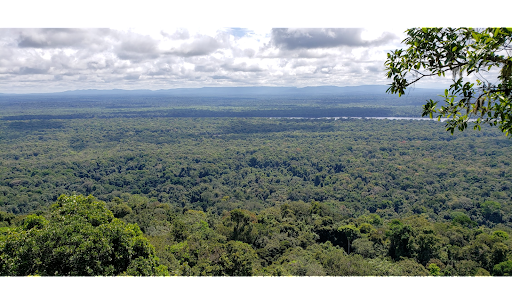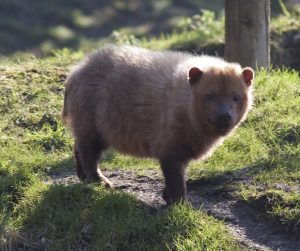Guyana Pt. 2: Camera Trapping

By C2ST Staff
Many animals are very cryptic and will run or hide at the first sign of trouble. Humans are (comparatively) smelly and noisy, making us very bad candidates to do anything stealthily. Camera traps don’t actually capture anything except for photos, videos and a whole lot of data. Instead, infrared sensors detect movement or changes in the heat signature of the environment around them, at which point they begin to capture photos or video footage.
Camera traps have a variety of functions and characteristics that make them incredibly useful for conservationists all over the world. Unlike many conservation methodologies, camera trapping is entirely non-invasive, which means it has no negative impacts on wildlife. In most instances, the animals won’t even know that they’re being photographed. Beyond the inherent benefits of not disturbing an animal trying to go about its business, there are other advantages to secretive data collection.
Camera traps are odorless and silent, and that allows them to capture animals’ natural behaviors in ways humans normally cannot. Through the data collected by camera traps we can see how animals interact with their own species, with other species, and with the environment around them when they are undisturbed. This allows researchers to paint a clearer picture of animal behavior, and can lead to stronger conservation outcomes.

In Guyana, as you may recall from my first blog, it is very hard to spot most animals in the rainforest. The many difficulties associated with finding animals in the rainforest make camera trapping all the more valuable. The Bush dog, a reclusive, rarely seen, and very mysterious canid was first photographed in Guyana in 2019 through camera traps. That is pretty astonishing, since they were first discovered–only through fossils–in 1880. Beyond Bush dogs, camera trapping is being used to assess population viability of game species across Guyana’s indigenous lands, in order to inform proper resource use. In other words, camera traps are helping Guyanese indigenous continue to live traditional lifestyles in a way that keeps their culture and resources intact.
Another unique thing about camera trapping is that it allows for citizen scientists–people like you, or me–to participate in the scientific process. Zooniverse has a number of camera trap projects that you can take part in from the comfort of your couch!
Thanks for reading Guyana Pt. 2! Pt. 3 coming soon…
Please email Alex Galassini (agalassini@c2st.org) with questions about the trip, or if you just want to see more pictures.